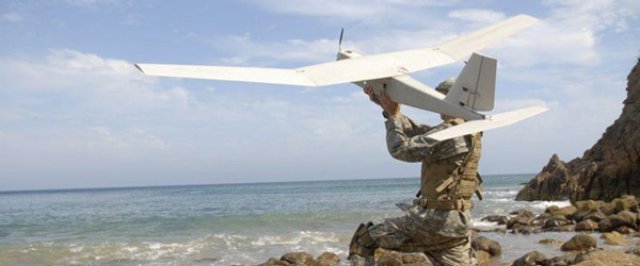has announced that the U.S. Marine Corps is the first military service to adopt four different small unmanned aircraft systems (UAS) from the company with the receipt of a firm fixed-price order valued at $5,558,479 for the RQ-20A Puma AE through an existing U.S. Army contract. Delivery is scheduled within two weeks.
“The Marine Corps was the first military service to formalize the adoption of small unmanned aircraft systems and is now the first to adopt four of our systems, recognizing the life-saving value of this capability,” said Tom Herring, AeroVironment senior vice president and general manager of its Unmanned Aircraft Systems business segment. “When time is shortest and risk is highest, small UAS deliver critical information that helps troops do their jobs more safely and effectively.”
In 2003, the Marine Corps became the first U.S. military service to establish a programme of record for small unmanned aircraft systems with their competitive selection of AeroVironment’s RQ-14 Dragon Eye for the Small Unit Remote Scouting System (SURSS) program. In 2007, the Marines procured AeroVironment Wasp systems and then replaced their Dragon Eye fleet with AeroVironment’s RQ-11B Raven system starting in 2009. With the procurement of Puma systems the Marine Corps is the first service to adopt four different AeroVironment small UAS.
The United States Special Operations Command (USSOCOM) selected the Puma UAS in 2008 for its AECV program after a full and open competition, the fourth U.S. Department of Defense competition for programs of record involving small UAS and the fourth such competition won by AeroVironment. In 2011 the United States Army assumed management of the AECV program. Each Puma system consists of three aircraft and two ground control systems. The aircraft carries an integrated electro-optical and infrared gimbaled video camera, is designed for enhanced survivability in land and maritime environments, and can operate effectively in foul weather and over rugged terrain. Its quiet operation, stabilized imagery and precision landing capability make Puma systems easy to operate and recover. The Puma weighs 13 pounds, is battery powered and has a flight endurance of two hours.
Source: Press Release

